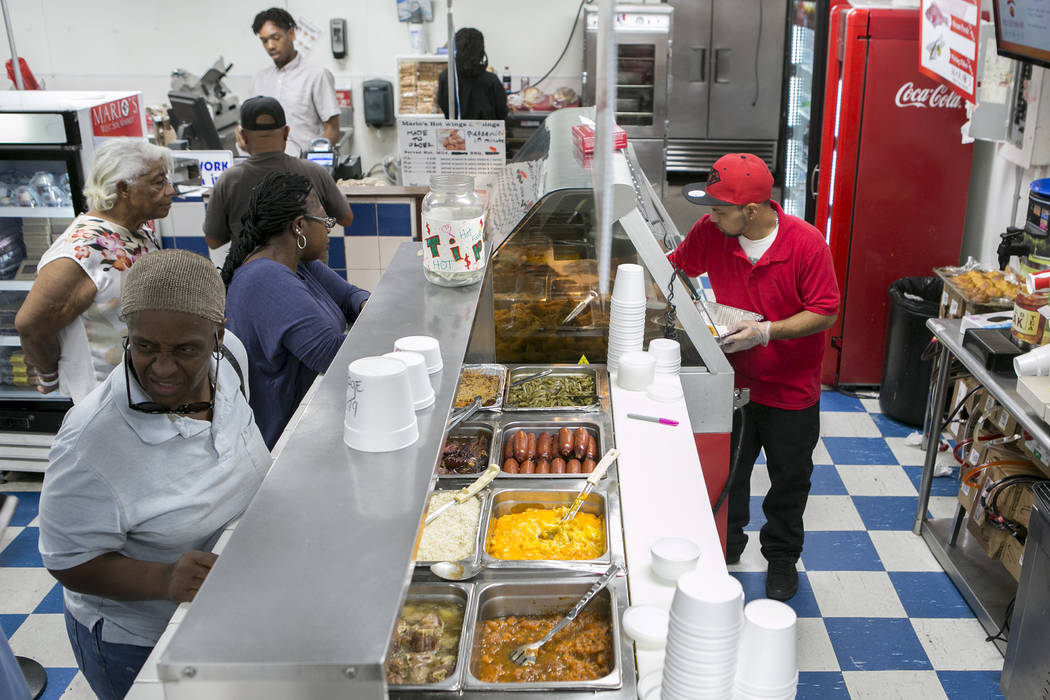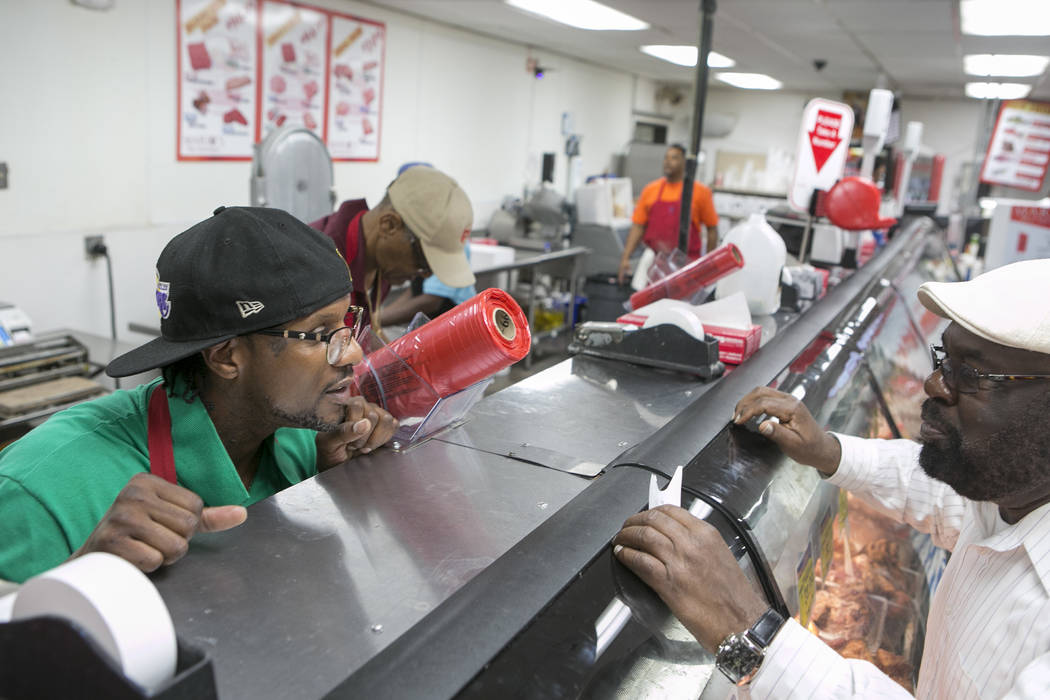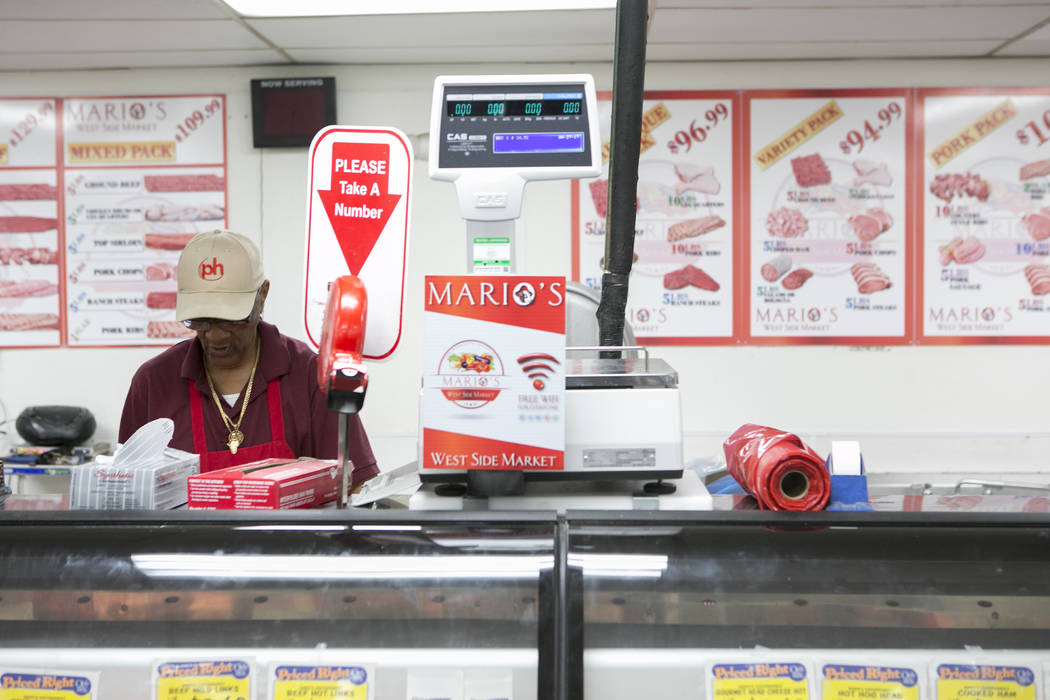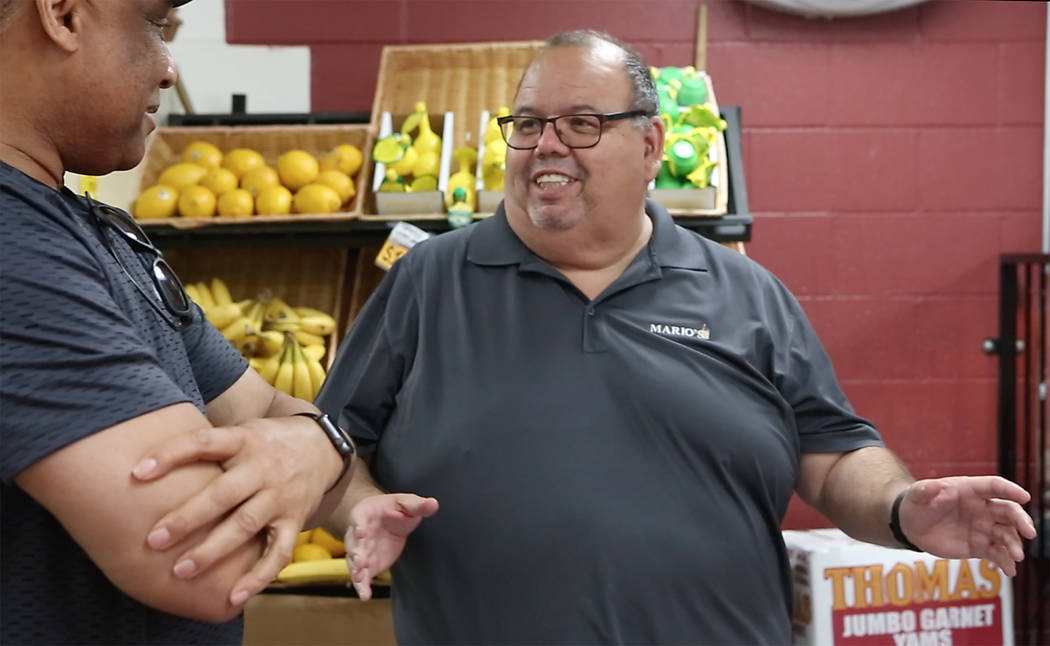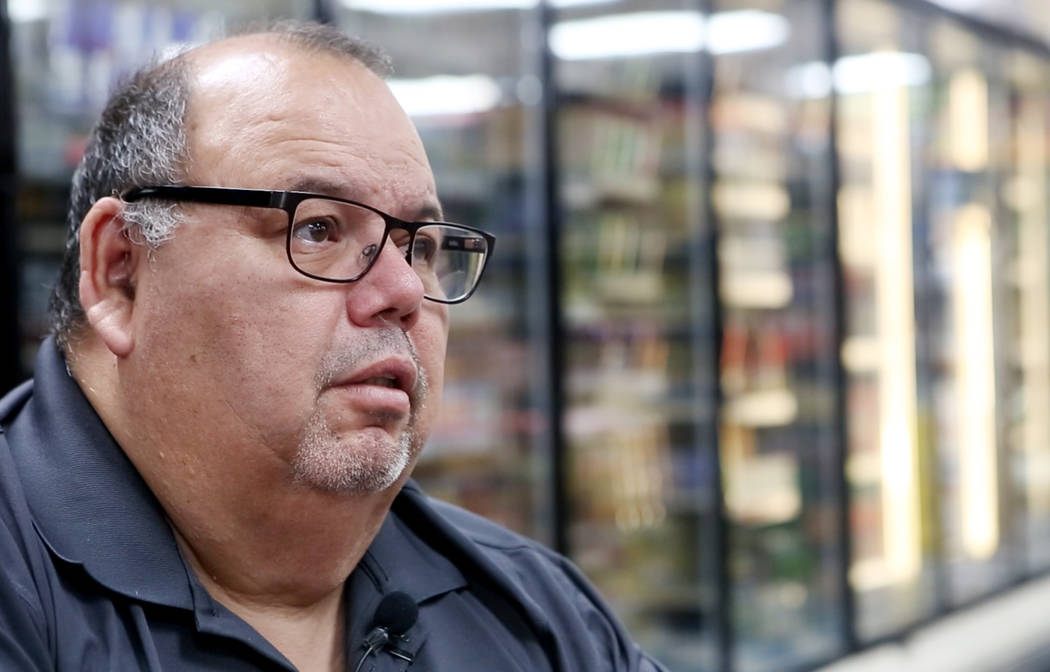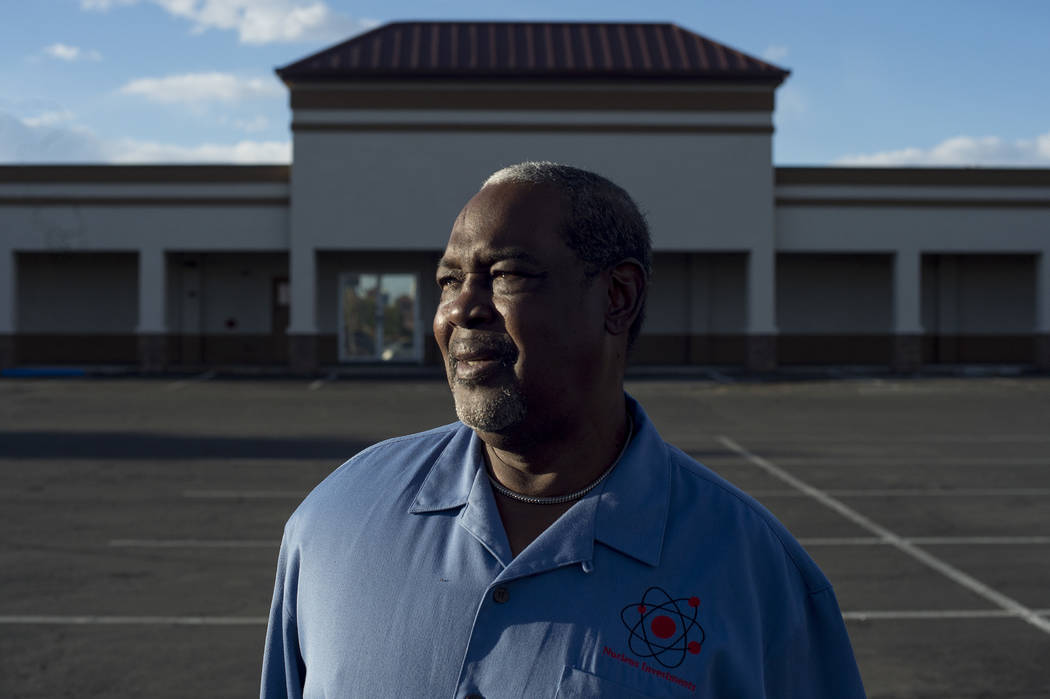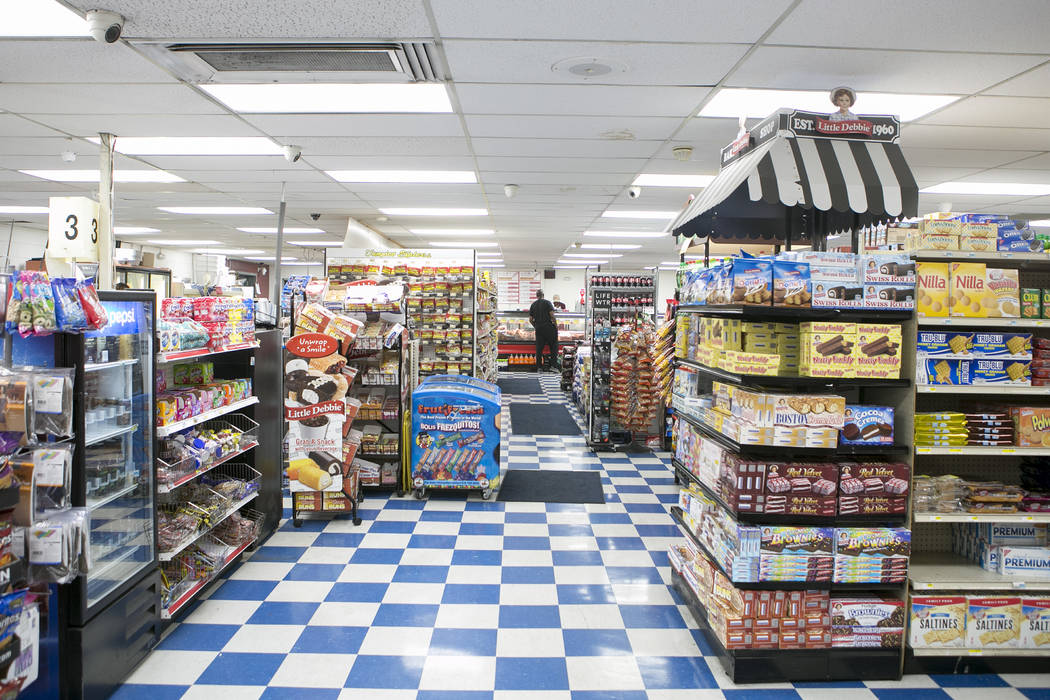25 years after the Rodney King riot, west Las Vegas ‘stuck in time’
While other parts of the Las Vegas Valley have grown exponentially in recent years, the Historic Westside has seen only pockets of economic development, mainly along Martin Luther King and Lake Mead boulevards.
Many neighborhood natives and longtime residents of what was once the city’s predominantly black community say the Rodney King riots 25 years ago bear considerable blame for the stagnation.
They add that neglect by the city hasn’t helped.
Some describe the community as being “stuck in time” since the unrest, pointing to prevalent empty lots, boarded-up buildings and occupied properties surrounded by chain-link fencing as evidence.
“That area, Jackson and D street, was thriving when I first came out here in the ’70s,” recalled Scott Johnson, a local developer. “There were businesses and stuff here. It seems like the whole area has taken a back seat as far as economic development.”
Jan Jones Blackhurst, who was Las Vegas mayor at the time of the riots, said a growth spurt is partly to blame. Las Vegas was experiencing a population boom in 1992, which she said helped disperse development unevenly.
“We were growing out into the suburbs. Why? Because there was readily available land at affordable prices. So that’s where you went,” Jones Blackhurst said. “That drove development into southern Clark County, out into Henderson and into Summerlin and somewhat into North Las Vegas. So everything was growing around west Las Vegas but not driving the development into west Las Vegas.”
Las Vegas City Councilman Ricki Barlow, who has represented the Westside since 2007, says he has only pushed the community’s economic development forward.
“I’ve basically driven, you know, hundreds of millions of dollars in community economic development all around this specific area,” Barlow said, adding that he also helped establish “the Hundred Plan,” a vision for the commercial transformation of west Las Vegas, and a similar document to revitalize the area’s residential neighborhoods.
Both say the 1992 riots did not help advance development goals in the area.
A neighborhood on fire
The rioting erupted in the Westside the day after four white Los Angeles Police Department officers were acquitted of the beating of black motorist Rodney King in Los Angeles on April 28, 1992.
The violence caused an estimated $6 million in property damage in and around the Westside. The biggest economic blow came when a rioter threw a Molotov cocktail into the Big 8 Market, starting a fire that quickly spread throughout the community’s only strip mall, the recently built Nucleus Plaza.
“I looked out the window and said, ‘Oh my God, the Westside is on fire,’” said Sheree Williams, who was about 13 years old during the unrest.
Billy McCurdy, pastor of the Progressive Community Church of God in Christ, said the businesses that were destroyed in the fire “had the potential of bringing a strong economic base to the community.”
“Why would you tear up your own neighborhood? It was the stupidest thing to do,” said resident Linda Sanders, who also owns TCG Graphics and Printing on Washington Avenue.
John Edmond, who owned Nucleus Plaza at the time, said it was heart-wrenching to see his own neighbors take down what he had built to help develop the community. Especially, he said, since the area was just starting to bounce back from a “dangerous” reputation outsiders ascribed to an even more economically disruptive and violent race riot in 1969.
“I spent years, since 1980, bringing in all of these different tenants, convincing the Las Vegas community that the area is safe, that the Westside should be part of mainstream Las Vegas,” Edmond said. “The perception of danger from the riots in that area keeps commerce out. That perception still persists, even though I’ve never seen a black-on-white crime in 30-odd years.”
Data provided by the Metropolitan Police Department show that the Westside this year has accounted for 5 percent of the city’s violent and property crime, essentially proportional to its share of the population.
Along with a perception of danger, the area hosts a large percentage of the city’s homeless, adding to the difficulty of luring developers or new businesses, many residents say.
Long-term consequences
The riot also made it harder to get loans.
David Washington, a longtime west Las Vegas resident, former Las Vegas fire chief, and chairman of the board of the New Ventures Capital Development Co., said access to capital is the main issue facing Westside business owners today.
“You get a lot of lip service,” Washington said. “Many of the stores that got boarded up and went under did so because they got more lip service than actual capital participation.”
It’s an issue that has long faced minority-owned businesses across the country, he said.
Nationally, black-owned businesses received just 2 percent of U.S. Small Business Administration 7a loans, which aim to help new and existing businesses, over the past six years. The percentage was somewhat higher in the 89106 ZIP code, with three of 11, or 27 percent, of the SBA loans approved since 2012 going to black-owned businesses.
The development that has occurred since 1992 has largely sprouted outside the community center and has primarily consisted of businesses that aren’t locally owned.
‘Taco Bell gave me my life back’
Today a rebuilt Nucleus Plaza has been joined by another strip mall, Edmonds Town Center, across the street. There also are pockets of new businesses and services along Martin Luther King Boulevard and Lake Mead Boulevard, like the Andre Agassi College Preparatory Academy, a Bank of America, an FBI building, a Cox Communications operation, fast-food eateries, a post office and a fire station. Tenaya Creek Brewery has also set up shop on West Bonanza Road. Historic Westside development
This development has had an impact for some.
“Taco Bell gave me my life back,” said Latanya Logan, 47, who works at the recently opened restaurant on Meadows Lane.
A Taco Bell spokesman said there are 33 employees at that location, seven of whom live in the Westside.
Frank Hawkins, a Westside native, said the business activity along MLK Boulevard is a start, but there’s still a long way to go.
“In order to circulate your money within your community, then you need to have somewhere to spend your money,” Hawkins said. “Bringing in new industry is great, but are the businesses from the community? If it’s just a national chain coming in, that’s good because that proves that there’s enough traffic and expendable income. But if the money isn’t circulating within your community, then it comes in and out. That’s a pervasive problem in low-income communities.”
A hand from the city
Many in the community say the city of Las Vegas needs to do more to help, including providing more support to large-scale projects, encouraging more development in the heart of the community and building more housing.
“The city of Las Vegas hasn’t done its portion, and neither has the county or the state,” said Elgin Simpson, a lifelong resident and community leader.
Dora LaGrande, who chairs the Southern Nevada Regional Housing Authority Board of Commissioners, agreed.
“Look at how the rest of the valley has grown. … You’ve made it happen everywhere else. What is the real reason that you haven’t made it happen (in the Westside)? And in my opinion, that’s an unwillingness to invest,” LaGrande said.
But Barlow, the area’s representative on the Las Vegas City Council, said the city is doing what it can.
Since 1994, the city has played a part in investing over $180 million in the area. That includes about $21.7 million in housing development, about $4.9 million in public buildings and many millions of dollars worth of infrastructure improvements on Martin Luther King and Lake Mead boulevards, including sidewalks, streetlamps and bike lanes.
Since 2009, the city also has sold land below market value for new business to locate to the area, including Bank of America, El Pollo Loco and Nevada Health Centers Inc.
Now that the commercial transformation has started along the main thoroughfares, Barlow said, he hopes to move development into the neighborhoods and is focused on adding rooftops.
‘Full of bull’
Mario Berlanga Jr., owner of Mario’s Westside Market, said that while the city has attracted some new businesses to the area, it hasn’t done much to help existing enterprises grow.
“I’m sure the city doesn’t want to see anybody fail. But they don’t make it easy for the business people, or anybody, to try to get help (with finding money for building improvements or business expansion),” Berlanga said, adding that he would appreciate some help navigating city paperwork and red tape.
“I think the city should get a little more involved and have more meetings with the community and ask ‘how can we help?’” he said, adding that the city is currently “full of bull when they talk about helping people over here.”
Jones Blackhurst said she understands the frustration.
“Until there’s a coordinated effort between the community, the city and the county in designing and (creating incentives for) an infill development plan in west Las Vegas, it’s going to continue to be challenging, because people can go to outside areas that aren’t developed, where it’s easy and it’s cheap.”
Mixed visions, mixed future
What the Westside’s future holds — or should hold — depends on whom you ask.
The city has its vision for the area, and various west Las Vegas factions have theirs.
Some leaders, including Ward 5 Chamber of Commerce President Katherine Duncan, would like to see an African-American-themed hotel and casino in the area. Others dream of large industries, like manufacturing operations, moving in. Retired Assemblyman Harvey Munford would like to see public-private partnerships for certain projects, mirroring a bill he sponsored while in office but failed to pass.
Meanwhile, church leaders are discussing whether they should drop opposition to businesses that may be at odds with community values, like liquor stores, to prevent them from opening near the area’s many churches, McCurdy said.
Vision or no vision, community redevelopment efforts and plans are aligning with traditional patterns of gentrification and will drive the community’s growth, said Christie Baston, an associate professor of sociology at UNLV.
As property values continue to rise in Las Vegas as a whole, the Westside will become an increasingly attractive location to develop, she said.
And as economic changes take place, demographic changes will follow, she said, noting that the area is likely to continue to see significant growth in its Hispanic and Asian population.
Foreign investment in the area could also play a role.
Claytee White, director of the Oral History Research Center at UNLV Libraries, said Asian investment and population growth in the Westside could accelerate as the city experiences an investment boost from China, the result of nonstop Hainan Airlines service between Las Vegas and Beijing and projects like the Lucky Dragon and Resorts World.
The upshot, she said, is that the Westside will continue to evolve.
“African-Americans will never live again in just one area,” White said. “That’s not the way it’s going to be.”
Contact Nicole Raz at nraz@reviewjournal.com or 702-380-4512. Follow @JournalistNikki on Twitter.
READ MORE:
• Police rebuild trust in Las Vegas’ Westside, one event at a time
• When Las Vegas’ Westside boiled over after Rodney King verdicts in 1992
Related
When Las Vegas' Westside boiled over after Rodney King verdicts in 1992
Police rebuild trust in Las Vegas' Westside, one event at a time
Familiar KCEP voice reassured community in chaos of Historic Westside riots
Life before and after desegregation
The Westside was historically home to most of Las Vegas' black population.
Claytee White, director of the Oral History Research Center at UNLV Libraries, said city officials at the time of the city's formation in 1905 forced black residents to move to the Westside by threatening to withhold business licenses.
While segregation deprived the enclave's residents of opportunities, many longtime residents say it also helped the area thrive.
"When there was only one segment of town that the African Americans could live in, then you can only shop in that area, get your haircut, buy your clothes, so your money circulates within your community 10 to 15 times before it went out," said Westside native Frank Hawkins. "It passed through all of those hands, and everybody got a piece, and they could make a living."
Desegregation opened up economic choices, which he said was supposed to be a good thing.
"But over time, when you take the best and the brightest away from anywhere, when we take the smartest people, the people who make the most money, the business dollars out of the community, what you end up leaving are those who make the least income, and when you talk about knowledge, you take the least educated and leave them there. … When you take the best of everything out of west Las Vegas, you are left with not much."
Katherine Duncan, president of the Ward 5 Chamber of Commerce, said desegregation turned out to be "a one-way street."
"Individually as people we were able to elevate ourselves because we were allowed to go and do and be and live wherever we wanted to," she said. "But as a people, as a neighborhood, as a community, we suffered."
The once-thriving Westside
The Historic Westside has seen better times.
"When I was a kid, west Las Vegas was jumping," with lively nightlife and a solid business community, recalled Elgin Simpson, 72, who was born and raised in the Westside.
The district's symbolic centerpiece was the Moulin Rouge hotel-casino, which opened on Bonanza Road in May 1955 at an estimated cost of $3.5 million. It was the first integrated hotel and casino in the U.S.
Before the hotel's opening, black entertainers performing in Las Vegas were denied access to casino and hotel dining areas and were forced to seek overnight accommodations in black boarding houses, according to the National Park Service. When acts like Louis Armstrong, Nat King Cole, Ella Fitzgerald or Sammy Davis Jr. headlined on the Strip, they entered respective casinos through stage or kitchen doors, said Katherine Duncan, president of the Ward 5 Chamber of Commerce. After the Moulin Rouge opened black entertainers had a place to go and often did second shows after performing on the Strip.
After a successful six-month run, it unexpectedly closed its doors that November. Duncan says former Clark County Sheriff Butch Leypoldt ordered it to be closed in what she called "a hate crime." Others contend its closing was a conspiracy by white hotel and casino owners on the Strip. Still others say there was pressure from the banks that were holding the mortgage, and others blame mismanagement.
As the Review-Journal has reported, the Moulin Rouge has left a lasting impact on the community.
West Las Vegas vs. Westside
While the terms are often used interchangeably, they aren't quite the same.
The Westside is an area within west Las Vegas.
By the city's definition, the Westside's southern border is Highway 95, while west Las Vegas' southern border is West Charleston Boulevard.
The Westside's eastern border follows Interstate 15, while west Las Vegas' eastern border is Main Street.
The Westside is also sometimes referred to as "the 106" — a reference to the Westside zip code, 89106.
Claytee White, director of the Oral History Research Center at UNLV Libraries, said the area's name has undergone "four or five evolutions" over the decades, including West Side — two words — and "Historic Westside" with the re-opening of F Street in 2014.
Government funding for west Las Vegas development
The city of Las Vegas has a variety of program available, including:
— Redevelopment Set-Aside Funds (for Affordable Housing), allocated to nonprofit organizations to provide housing units for households with earnings less than $59,800.
— HOME/Low Income Housing Trust Funds, federal funds to strengthen public-private partnerships and to expand and improve the supply of affordable housing for families with household income less than $59,800.
— The Neighborhood Partners Fund, designed to improve livability through neighborhood improvement projects. The program grants up to $5,000, which must be matched by the community with cash, volunteer labor, donated supplies, and equipment or professional services. Example projects would be community gardens, an entry-way monument, or a school youth mural.
— The Youth Neighborhood Association Partnership Program, which offers grants of $1,000 for youth to create and implement neighborhood based service learning projects of their own design, like services for seniors.
— The Community Development Block Grant Program, which provides capital funding and operating funding for public service nonprofit programs. The City of Las Vegas receives the funds through an annual grant from the federal Department of Housing and Urban Development.
— Las Vegas Redevelopment Agency funds, available to commercial property owners or tenant businesses located within the Las Vegas Redevelopment Area. Available funding includes tax increment financing (a pledge back to the property owner of future property taxes paid by the owner). Direct financial investment is also available to projects as a means of "gap financing" for projects. The Buy Low Grocery Store is an example of one project that benefited from gap financing from the agency.



